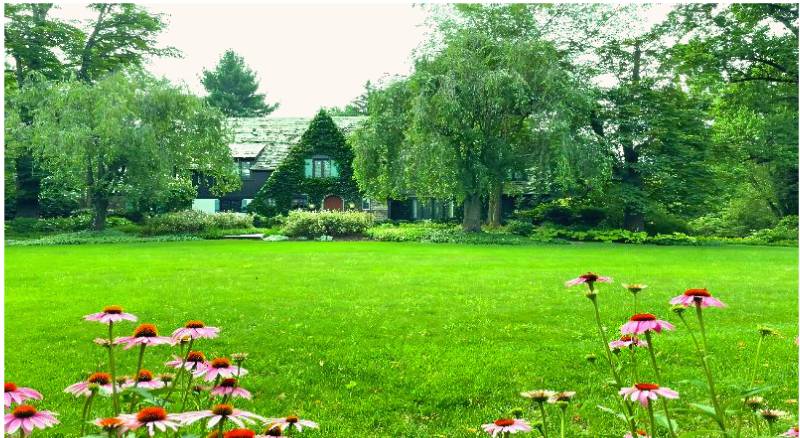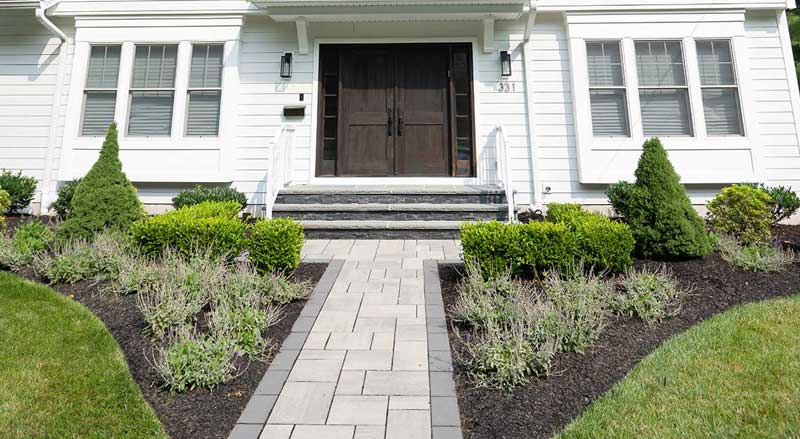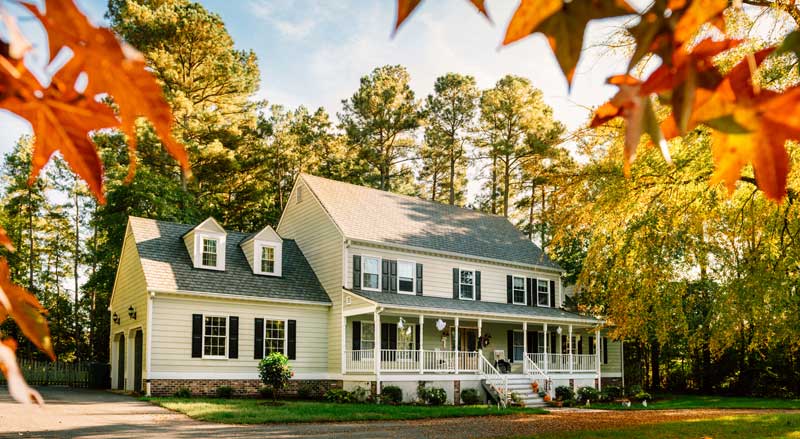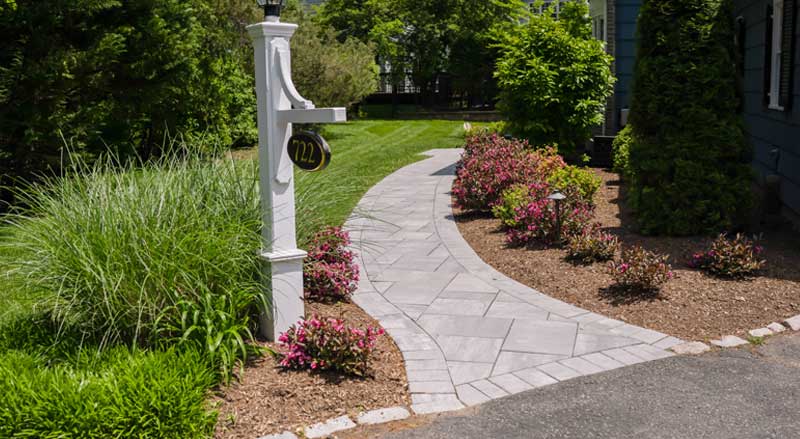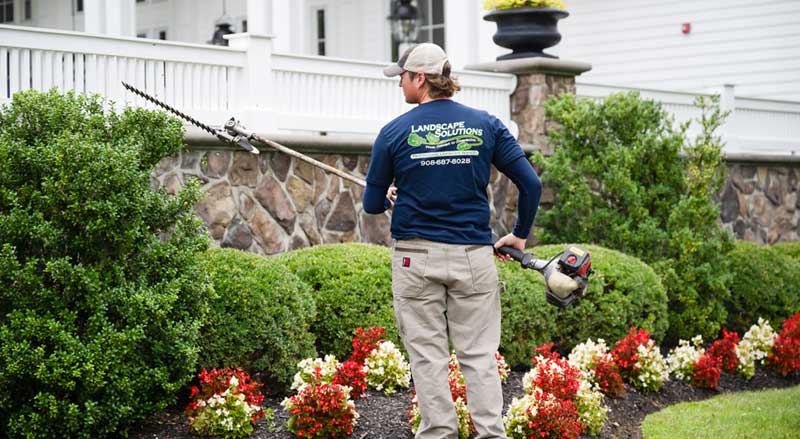Living in New Jersey means your lawn has likely seen better days. After enduring a harsher summer than usual, with its relentless heat and scarce rainfall, our lawns look worn and weary, clearly struggling under the strain of water scarcity and sweltering temperatures.
The onset of fall brings with it a wonderful opportunity for revival.
Cooler climates, a welcome increase in moisture, and a dip in the insect population all set the stage for your lawn’s comeback.
This is the season when nature appears to have designated as its own renovation period, perfectly timed for your lawn to recover, rejuvenate, and thrive once again.
In this guide, we will explore why fall, specifically September and October, is the ideal time to give your lawn a makeover.
We’ll outline the most effective renovation techniques and provide you with practical tips to transform your lawn into a lush, vibrant canvas that’s sure to be the envy of the neighborhood.
Why September and October Are the Best Months to Renovate Your Lawn
Optimal Weather Conditions
The best weather for grass seed germination and root establishment involves warm days and cool nights, with temperatures ranging from the mid-60s to mid-70s.
This climate supports robust grass seed germination and regrowth, making it an ideal time for lawn renovation without the risk of heat stress on young plants or individuals.
Soil Temperature
The soil beneath the surface stays pretty warm, which helps it to promote root growth and reduce the stress it endured from the extreme summer heat.
The warm soil creates an ideal environment for turf recovery, and this efficient absorption of nutrients enhances the overall health of your lawn.
Increased Rainfall
More often than not, Autumn in New Jersey often brings a good amount of rain, which helps keep the soil moist. Adequate moisture is essential for seed germination and healthy growth.
Fewer Pests
As temperatures drop, pests become less active, benefiting your newly seeded lawn and allowing your renovation work to proceed smoothly.
A Step-by-Step Guide to Successful Lawn Renovation
Assessment
Begin your lawn renovation by assessing its current condition. Walk around your yard and carefully examine each section. Look for bare patches, thinning grass, and areas affected by invasive weeds.
Identifying problematic areas will help you tailor your renovation efforts effectively and apply the necessary treatments to restore your lawn’s vibrancy.
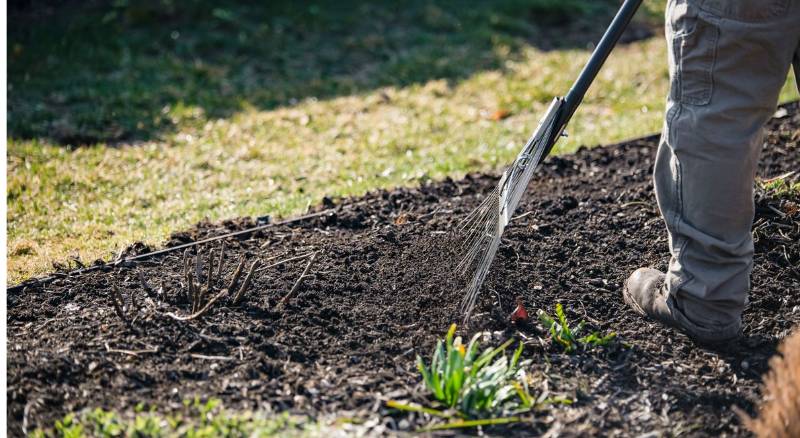
Dethatch Your Lawn Before You Renovate
Thatch removal is vital for promoting healthy grass growth, as this organic layer can block air, water, and nutrients from reaching the soil.
Raking up fallen leaves keeps the lawn tidy and prevents further thatch accumulation.
At Landscape Solutions, we have witnessed how proper thatch removal can significantly improve a lawn’s health.
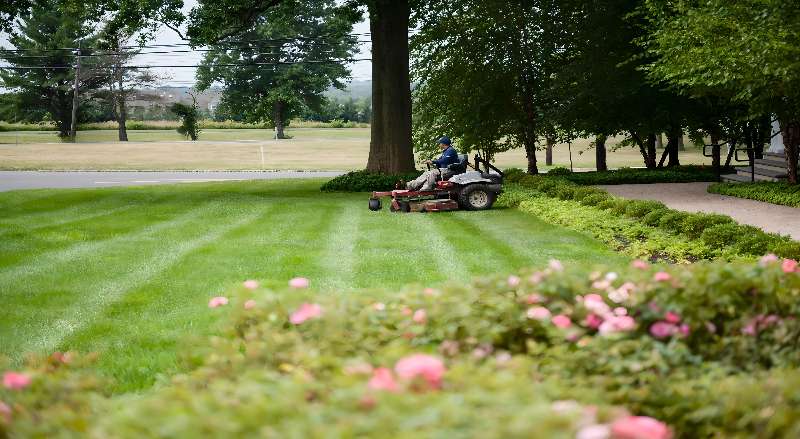
Mowing
Continue mowing your lawn in September, and never cut over one-third of the grass blade length in a single session to avoid stressing the grass.
When you have recently planted new seeds, it is important to adjust your lawn mower to a slightly lower setting for the first month. This will allow more sunlight to reach the emerging seeds, creating optimal conditions for healthy germination.
Once the new grass reaches the same height as the existing lawn, you can resume mowing at a higher setting.
Regular mowing, ideally once a week, supports robust root development and contributes to a lush, resilient lawn overall.
Soil Compaction and Aeration
Addressing soil compaction, especially after the summer season, is crucial for maintaining healthy and strong soil.
When soil gets compacted, it blocks air, water, and nutrients from reaching the roots, which hurts the grass.
Aeration is a key step in fixing this problem.
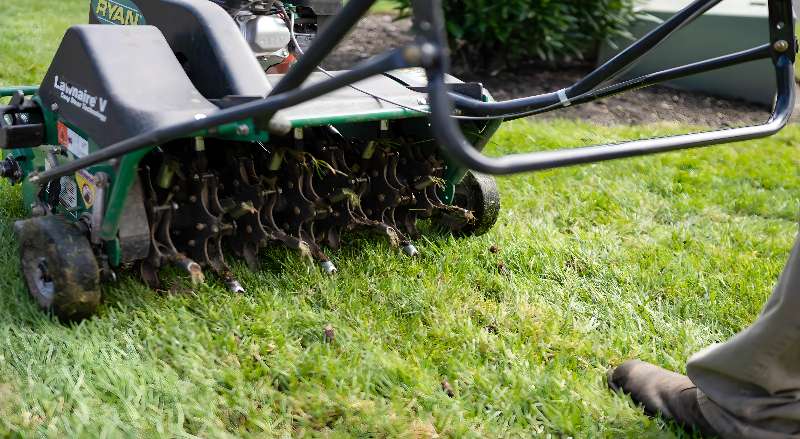
Aerating the soil promotes the entry of air, water, and nutrients by creating small holes, which is essential for developing a strong root system and a vibrant lawn.
Aeration is especially important if your lawn gets a lot of foot traffic, which can cause compaction.
If you have a large lawn, consider getting an aerator or hiring a lawn care professional to ensure the job is done right.
Seeding And Overseeding
Mastering the right seeding and overseeding techniques is your secret weapon to unlocking the beautiful outdoor space of your dreams.
Choosing the Right Seed
The first step in any seeding or overseeding project is selecting the appropriate grass species for your specific climate, soil type, and level of sunlight.
Kentucky Bluegrass is a popular choice for New Jersey lawns due to its hardiness and attractive color. Still, it may not be the best option for every property.
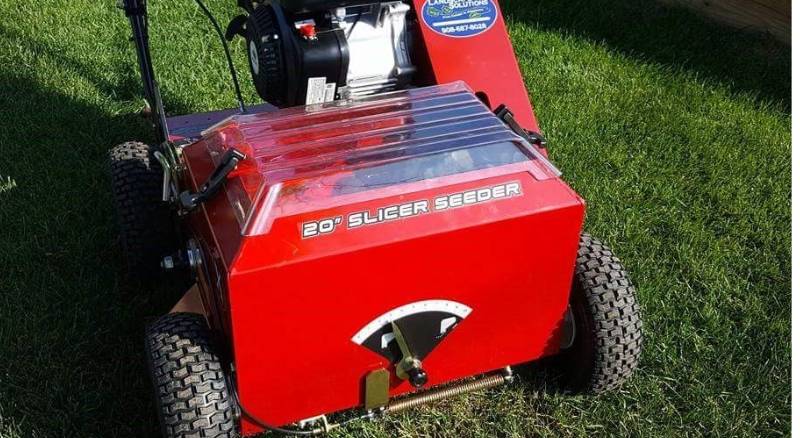
Our knowledgeable staff can help you determine the ideal seed type based on your lawn’s unique conditions.
Overseeding vs. Seeding: What's the Difference?
While seeding and overseeding involve adding new grass seeds to your lawn, they are used in different situations and serve different purposes.
Overseeding
Overseeding is a process that involves adding grass seed to existing turf.
This technique thickens a thin lawn, fills bare spots, or introduces a new grass species.
Overseeding is a great way to keep your lawn looking its best and prevent weeds from gaining a foothold.
For the best results, mow and dethatch your lawn before overseeding to ensure good contact between the seed and the soil.
Apply the seed evenly across the entire lawn to maintain a uniform appearance.
Slice seeders are useful tools for overseeding. They create a smooth planting bed and work the seed into the soil for optimal germination.

Seeding
Seeding is the process of adding grass seeds to bare earth. This method establishes a new lawn or repairs severely damaged areas.
Before seeding, add a fresh layer of topsoil to improve drainage and fertility.
Rake the seeds into the soil surface to promote contact and germination.
Tips For Seeding and Overseeding
Whether you’re seeding or overseeding, the following tips will help you achieve the best possible results:
- Use a lawn spreader to distribute the seed evenly, especially over larger areas.
- Make sure the seed makes good contact with the soil. If the seed doesn’t touch the soil, it won’t germinate.
- The optimal time to seed or overseed is in September and October. Waiting until mid-to-late October can be too late, as the cooler weather and approaching frost can hinder germination and establishment.
- Keep the soil consistently moist during the germination period to encourage quick sprouting.
- Monitor rainfall and supplement with irrigation as needed. Your lawn should receive at least one inch of water per week.
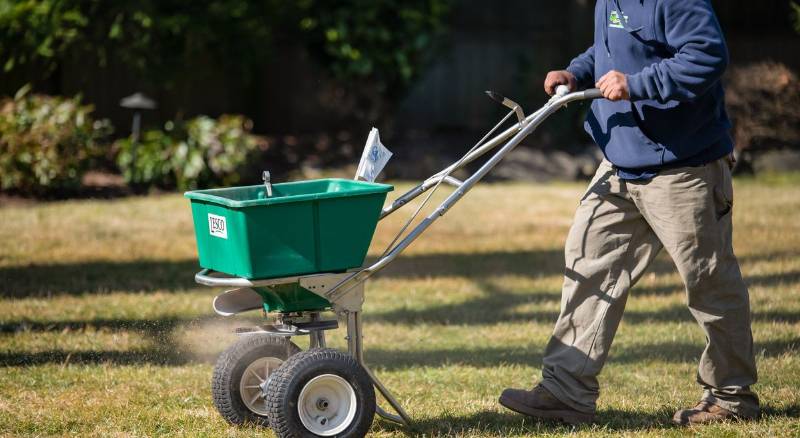
Fertilization
The best time to fertilize your lawn is during the fall season. Fertilizing during September and October gives your grass the nutrients needed to promote growth, strengthen the roots, and help prepare it for the next year.
Fertilizing encourages deep-root development, allowing your lawn to store nutrients for robust growth come spring.
For maximum benefit, pair fertilization with aeration. Aeration opens the soil, reducing compaction, improving drainage, and enabling the fertilizer to penetrate deeply and reach the roots.
Follow this sequence: aerate, seed, and fertilize within 48 hours while the soil is most receptive.
Consult your local gardening center to select the appropriate fertilizer.
Avoid spring fertilizers, as they can trigger excessive growth that may compromise your lawn’s ability to withstand winter.
Instead, opt for a fall-specific fertilizer lower in nitrogen but higher in phosphorus, promoting root development.
Remember always to follow the instructions on the fertilizer package and take necessary safety precautions to avoid overfertilization, which can harm the environment.
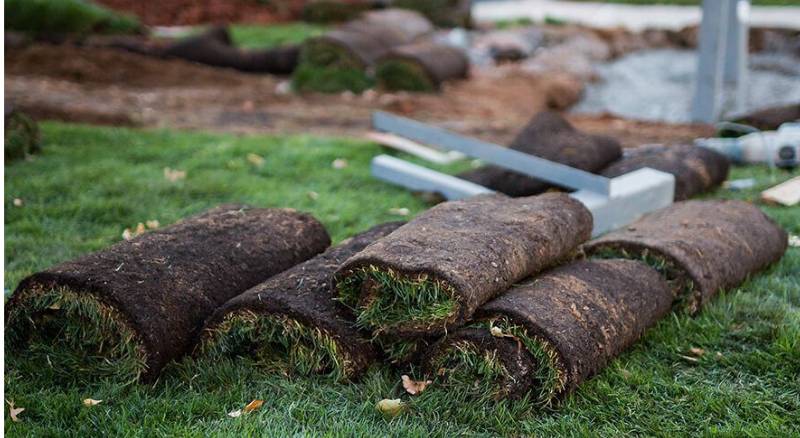
The Pros and Cons of Sod Installation Versus Seeding
Choosing between sod installation and seeding for your lawn comes with its own set of pros and cons.
We’ve listed some pros and cons to help you make an informed decision that aligns with your landscaping goals, budget, and patience level.
The Benefits of Sod Compared to Seed
- Instant Lawn: Sod instantly gives you a lush, green lawn, making it perfect for homes going on the market or for special events where you want your outdoor space to look its best.
- Erosion Control: Established sod helps prevent soil erosion, making it a great choice for slopes or areas with heavy rainfall.
- Improved Air Quality: Like seed, sod absorbs carbon dioxide and releases oxygen, contributing to cleaner air.
- Cooling Effect: Lawns can be up to 30 degrees cooler than bare soil and 50 degrees cooler than asphalt, making sod a great choice for urban areas.
- Noise Reduction: Sod can act as a sound buffer, reducing noise pollution.
- Increased Property Value: A lush, well-maintained lawn can increase property value and appeal.
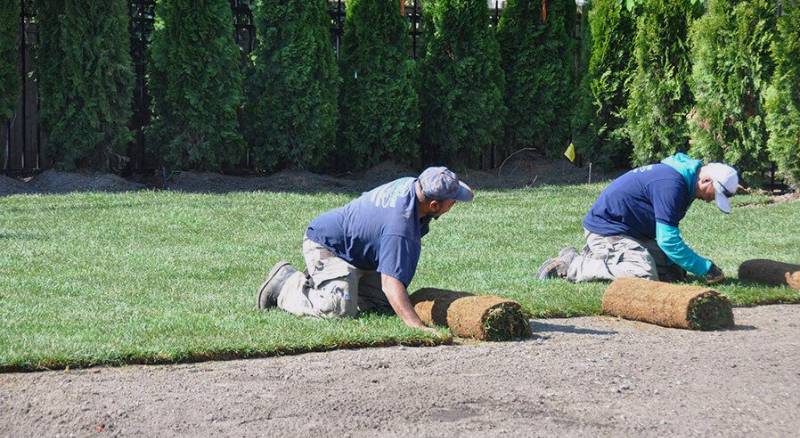
Drawbacks of Sod Compared to Seed
- Higher Upfront Cost: Sod is significantly more expensive to purchase than grass seed. This higher upfront cost can be a barrier for many homeowners.
- Installation Challenges: Sod installation requires more labor than seeding. The soil needs careful preparation, and the person laying the sod must do it quickly to prevent it from drying out, making DIY installation difficult.
- Heavy Initial Maintenance: After installation, sod needs frequent watering to establish a strong root system, which may be time-consuming and lead to increased water bills.
- Limited Grass Selection: Sod is typically available in a few standard grass types. Seed may offer more options if you want a specific kind of grass.
- Vulnerability to Disease: Because sod comes from a farm, there’s a risk of it bringing diseases or pests to your lawn. Seed doesn’t carry this same risk.
If you do decide to go with sod, make sure to work with a reputable installer to get the best results.
Are you looking for a stunning lawn? Look no further! At Landscape Solutions, we specialize in top-notch sod installation services to help you create the beautiful lawn of your dreams.
A Final Word on Lawn Renovation
Lawn renovation requires patience, but the result is well worth the effort.
Understanding the reasons why September and October are the prime seasons for lawn renovation in New Jersey, following the best practices outlined in this guide, and choosing the right method for your needs, you can achieve a lush, green lawn that will envy the neighborhood.
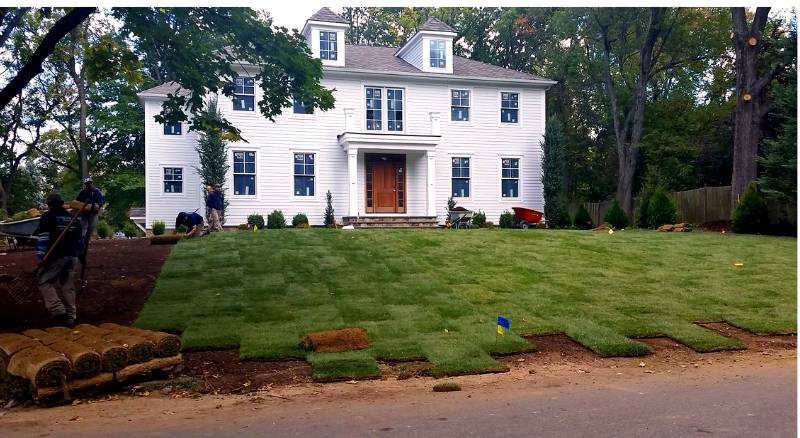
At Landscape Solutions, we’re passionate about helping homeowners create outdoor spaces they love.
Whether you choose to seed or sod, our team of experts is here to provide guidance every step of the way. From the initial assessment to the final walk-through, we’ll work with you to bring your vision to life and create a lawn you’ll enjoy for years.
Don’t let another season pass you by. Contact us today to schedule your lawn renovation consultation and take the first step toward the lawn of your dreams.

